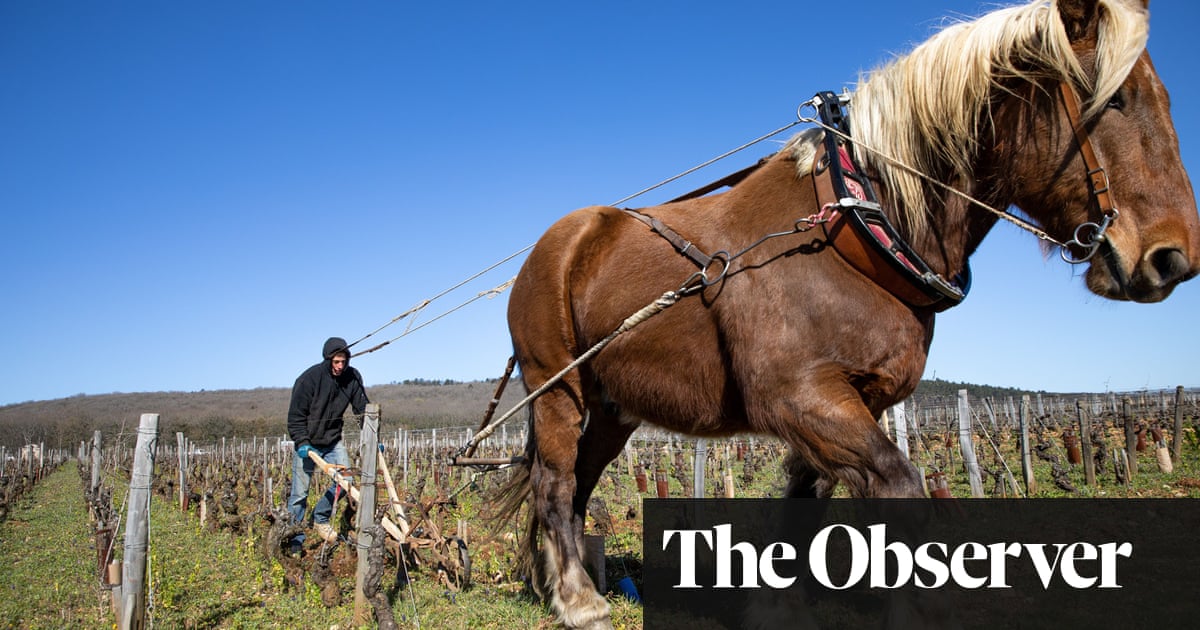
Domaine Paul Pillot Bourgogne-Aligoté, Burgundy, France 2018 (from £17.80, tanners-wines.co.uk; jeroboams.co.uk; davywine.co.uk) The wine world likes its hierarchies. A dozen or so grape varieties, for example, are considered to be naturally superior – part of the caste known, in this class-bound business, as “noble grape varieties”. At the other end of the scale, there are countless varieties labouring in anonymity or earning grudging praise from vignerons for their ability to resist disease or produce high yields. In the rarefied vineyards of Burgundy, for example, the nobles are very much Chardonnay and Pinot Noir, and both are planted all over the world by producers looking to imitate the great wines of Chablis, Montrachet or Vosne-Romanée. Aligoté, meanwhile, has always been the poor relation, a white variety of high acid and little distinction rarely planted elsewhere. When you taste a wine as good Paul Pillot’s version, however, with its burst of orchard fruit, its mouthwatering energy and tension, you wonder if it’s not the grape variety so much as the winemaker and vineyard that really matters.
Tharsys City Bobal, Utiel-Requena, Spain 2019 (£9.99, thegeneralwine.co.uk) Aligoté isn’t the only grape variety to show that it can achieve if only it’s given a chance. The reassessment of previously maligned varieties has been a feature of winemaking all over the world in the past few years. It’s a process that has been particularly prominent in areas that rushed to plant “noble” or “international” varieties such as Cabernet Sauvignon, Merlot and Syrah at the expense of their local stalwarts – and then realised that the international varieties weren’t anything like as suited to the local conditions. A great example of the phenomenon is the bobal variety of southeastern Spain. Despite being the second most widely planted red variety in the country (after tempranillo), it was almost never used to make quality wines, its name rarely seen on the label. Wines such as the good-value Tharsys City, with its red plummy tanginess and food-friendly nip of tannin and freshness, show that Bobal was a gem hiding in plain sight.
J Bouchon País Salvaje White, Maule Valley, Chile 2019 (£18.95, southdowncellars.co.uk) A lot of the best modern Bobal is made by small producers working in very traditional ways, with some of them using the clay pots known as tinajas. Names to look out for include Bodegas Ponce, Berandía, and Gratias, while an original pioneer of the variety’s renaissance, Bodegas Mustiguillo, continues to make some of the best Bobal around from its high-altitude single vineyard. What links all these producers is access to old vines – many planted in the 1940s or before. Vine age isn’t a guarantee of quality – but a lot of the great wines being made in the world today are from very old vines. That’s certainly the case with another variety enjoying a reputational transformation: Chile’s red variety país, which is made as a funky dry white from the palest berries in a wild old plot cultivated by J Bouchon in the Maule Valley. Aged in tinaja, it’s superbly succulent with crunchy yellow plum and pear.
Follow David Williams on Twitter @Daveydaibach
The Link LonkAugust 16, 2020 at 12:00PM
https://ift.tt/2DVX45y
Superb wines made from once-maligned grape varieties - The Guardian
https://ift.tt/3eO3jWb
Grape

No comments:
Post a Comment